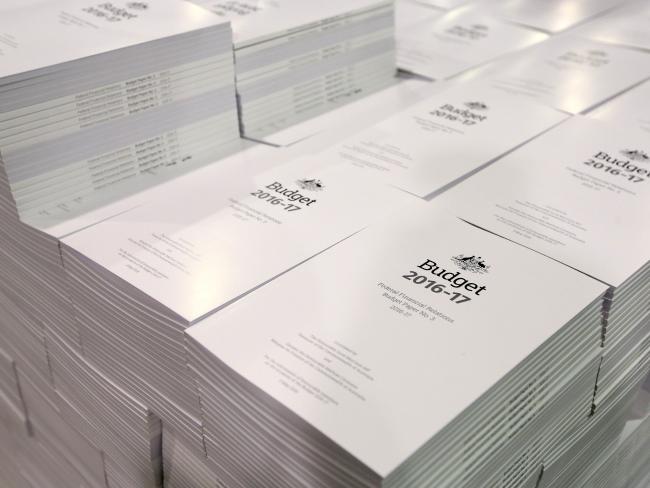by Jane McLeod | @jane_mc_leod
Thank goodness ‘jobs and growth’ isn’t a tongue-twister or Treasurer Scott Morrison might have got a little stuck in his Budget address last night. The two-word slogan mentioned several thousand* times dominated the big reveal of Australia’s 2016/17 Budget to the public. There were a lot of words masking important fine print, so to help you understand the bits that matter to you, here’s what it all means.
The government has decided to shelve the full fee deregulation scheme for now; (emphasis on the last part). Instead, we could potentially see partial fee deregulation; whereby universities would be able to determine their own fees, based on demand and popularity of certain courses. This could mean a hefty HELP debt for those wanting to start studying in the next few years. Apparently, the Treasurer thinks it’ll secure ‘long-term sustainability of the higher education funding’. However, these measures have got to get through the tricky waters of the Senate for the 2018 academic year before we need to totally freak out.
Outside of Sco Mo’s speech- we’re hearing fee deregulation for unis has been discarded but $1.4b in uni funding cut. #Budget2016
— Catalyst Magazine (@rmitcatalyst) May 3, 2016
Also flagged in this year’s budget was the potential for the HELP loan repayment scheme to be adjusted. The government acknowledges that students may be deterred by upfront costs, but the HELP loan scheme is working and effective. However, repayments may be adjusted. Currently, the individual income threshold is $54,126 for HELP payments. For your reference, it’s an average graduate wage but that’s only if you’re lucky to even score a relatively high paying job straight outta uni.
The government is suggesting that eligibility for repayments may be based on total household income. (so if you haven’t flown out of the nest yet, that includes your parent’s income). This is going to prove difficult for the government to pass through Parliament, with major opposition already surfacing from student unions and university students themselves.
As part of this higher education reform, the government is also looking at a potential minimum ATAR requirement for entrance into undergraduate programs. So this means that if you miss out on the score required to get into a course, a sub-course would be offered as an alternate pathway into university, as well as the existing TAFE options.
The government has also committed $9.7 million to consolidate the ongoing support for the BIITE (Bachelor Institute for Indigenous Tertiary Education) through the National Institute Program.
So once you’ve made it through university, the government predicts that it would take 8.9 years to repay HELP debt for the 2016-17 financial year, and after that, 9.1 years. The average debt will also increase by $1,100 and the estimated proportion of new debt not expected to be repaid is 18% for the foreseeable future.
But, it’s not all doom and gloom. The number of higher education graduates entering full-time employment within four months of completion has exceeded the estimate, currently at 68.8%.
Looking beyond education, what about the world outside the classroom? How is this year’s budget going to affect your day-to-day living?
A referendum and plebiscite ‘kitty’ has been established, with $160 million set aside for both marriage equality and constitutional recognition of Indigenous people votes. However, the government has not given any further details as to when, or how the money will be spent.
$160 million for the marriage equality plebiscite but govt has yet to decide on whether to fund yes and no campaigns https://t.co/BcHUIpp2K6
— Josh Taylor (@joshgnosis) May 4, 2016
In addition, the government will be increasing the price of cigarettes, with a 12.5% hike annually for the next four years. These increases will commence on September 1 2017, and will continue until 2020, rising per packet prices to $40.
And if you like your online shopping, there’s sad news for you. The GST will be placed on online purchases from July 1st 2017, meaning an extra 10% on your payments. Get shopping now!
Finally, if anyone watched the budget delivery, you’d know that we’re going to hear a lot about ‘jobs and growth’ from the Liberals in the lead-up to the election. The Youth Employment Package comes with $840 million to assist 120,000 young people over four years to ‘take advantage of job opportunities’. A new initiative, Youth Jobs PaTH (Prepare, Trail, Hire), was announced last night, along with $752 million to help young Australians transition from welfare payments into employment.
But after all of this, what does the government think is important for young people to take away from this budget? Their personalised ‘sorter’ will help them identify things relevant to you based on your age, income, employment status, number of children under 18 and any additional interests that you request.
After selecting every single additional option, based on a 20-year-old, employed and earning $5000 a year, with no children, there are three things you should focus on:
- Health: dental scheme
- Superannuation: low-income superannuation tax offset
- Tax: middle-income tax bracket extension
These details don’t change with similar variables either, so where is the information on climate change though? In Scott Morrison’s Budget Night speech, he made no mentions to global warming, other than the brief mention of Labor’s carbon tax. Being one of the key issues facing young people, surely there should be some mention of it, right?
So after attentive media coverage, and politicians selling the 2016/17 Budget, this year’s budget has proved what many thought it would be– an election budget. The government has focused on the positives and tried to please as many people as possible. But the real question is, will this be enough to keep them in office?
*an exact number cannot be confirmed
Photo: Kim Smyth for News Corp Australia


